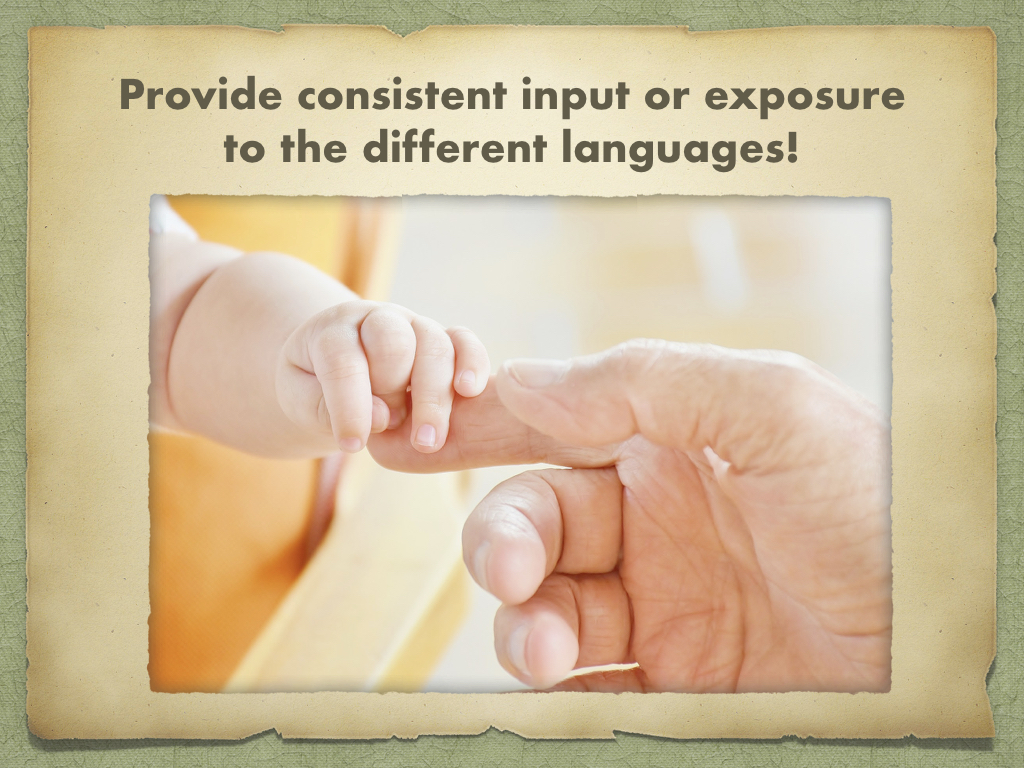It’s a marathon, not a sprint! Learning a language is an ongoing process. You can’t say after 6 months, “I’m done. I learned Chinese.” This is the first of a series of strategies to keep the momentum going and make language(s) part of your daily activities.
Tip:
Be consistent
I know this sounds almost like a cliche and you have probably heard it time and again… but nevertheless it’s a key aspect. It’s important to expose your child to the different languages in a consistent manner. For example, if you are the speaker of the minority language, try to speak it like a monolingual as much as possible. Sometimes we don’t even realize how much we codeswitch ourselves (i.e., go back and forth between languages). Or if you chose to have “French Wednesdays” or “Spanish Saturdays”, make sure to speak or expose your child to either French on Wednesdays or Spanish on Saturdays and stick to this pattern.
Challenge:
Actively observe your own language use!
- Do you regularly expose your children to the different languages?
- Are you consistent in providing language input to your children?
- Do you tend to codeswitch a lot?


2 comments
Can you please give some tip to prevent us (the parents), to code switch? We’re a Portuguese-Spanish couple, living in Germany, and we find ourselves quite often navigating between all the 3 (sometimes even 4) languages, and we can see that our daughter is starting to normalize code switching..
Hi Ana,
Codeswitching is not necessarily a bad thing. In some families, it is the regular way they use their multiple languages. That seems to be the case in your family. What you can do though is “monitor” your own language use and try to stick to a specific language (in certain contexts) if you feel that your daughter would benefit from it. It requires a bit of effort on your end insofar as you would consistently need to monitor yourself and your language use. What you can also do is observe your daughter’s codeswitching. Are there any specific instances when she codeswitches? For example, if you notice that certain vocabulary is missing in one of her languages and she always switches to another, you can specifically provide that input to boost her vocabulary in that area.
Here is a post I published a while ago on codeswitching. It has some ideas for how to use codeswitching to address children’s language needs.
Best, Veronika